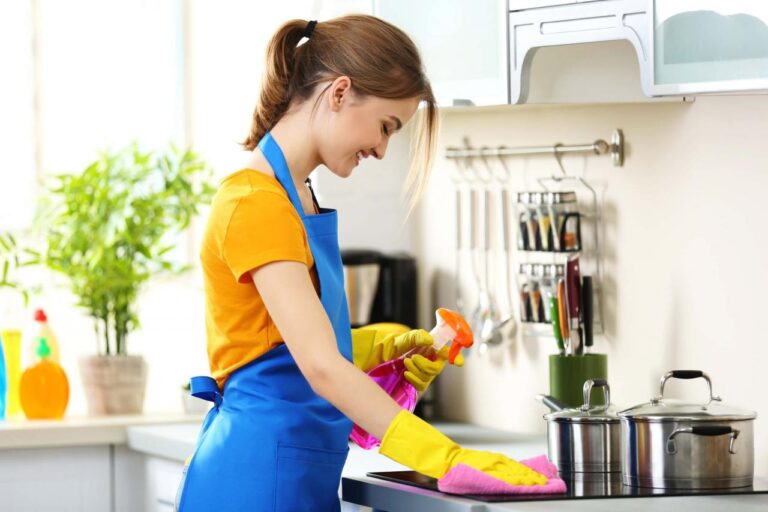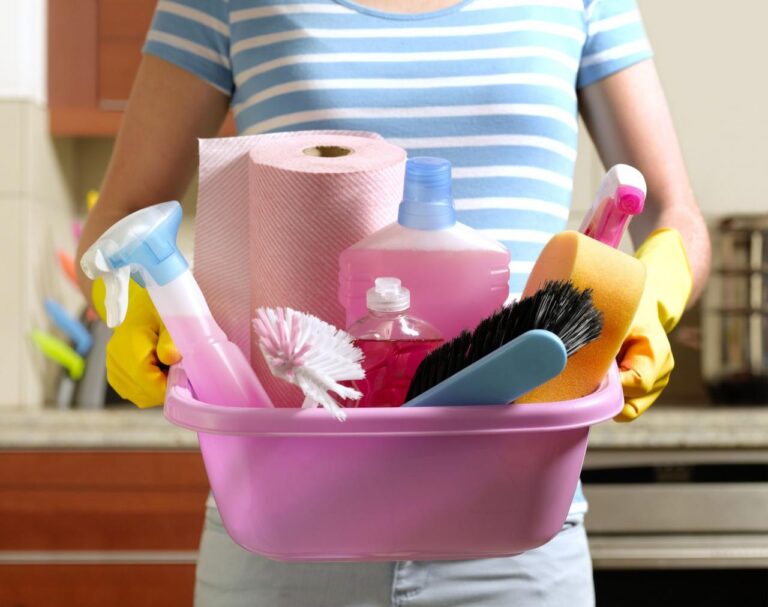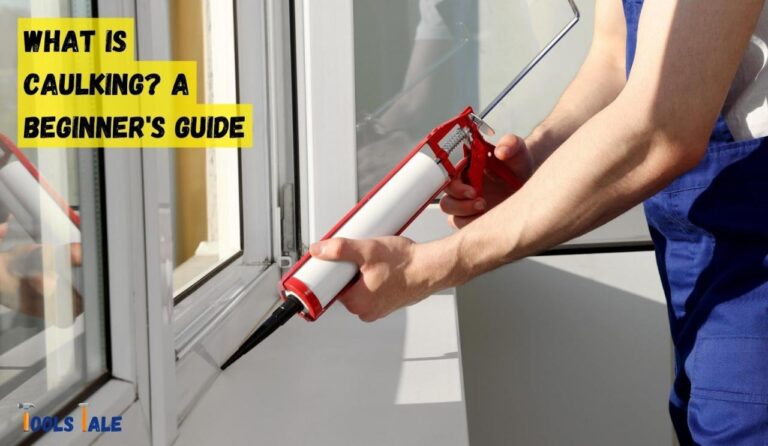Cleaning Tips And Tricks
Cleaning tips and tricks are essential for maintaining a clean and healthy home environment. This guide delves into various aspects of cleaning, from tackling stubborn kitchen grease to mastering the art of streak-free window cleaning. We’ll explore effective methods for cleaning different surfaces and materials, using both traditional and eco-friendly approaches. Whether you’re a seasoned cleaning pro or a beginner, this comprehensive resource offers practical advice and innovative solutions to help you achieve a sparkling clean home with ease and efficiency.
From creating a weekly cleaning schedule to crafting homemade cleaning solutions, we will cover a range of topics designed to simplify your cleaning routine and help you maintain a consistently clean and organized living space. We’ll also address common cleaning mistakes and offer solutions to prevent them, ensuring you get the best results with minimal effort and maximum effectiveness. Learn how to tackle specific cleaning challenges and discover the most efficient techniques for various surfaces and materials.
Kitchen Cleaning Tips & Tricks: Cleaning Tips And Tricks
Maintaining a clean kitchen is crucial for both hygiene and a pleasant cooking environment. This section provides practical tips and tricks for various kitchen cleaning tasks, focusing on efficiency and the use of readily available materials.
Microwave Cleaning with Household Ingredients
A step-by-step guide to cleaning your microwave using only household ingredients:
- Fill a microwave-safe bowl with 1 cup of water and 1 tablespoon of white vinegar or lemon juice.
- Microwave on high for 5-7 minutes, or until the water is boiling and the steam loosens food splatters.
- Let the bowl sit in the microwave for a few minutes to allow the steam to continue softening the grime.
- Carefully remove the bowl (use oven mitts!). Use a damp cloth or sponge to wipe away loosened food and stains.
- Wipe down the interior with a clean, damp cloth.
Cleaning Burnt Pots and Pans: Three Methods
Three methods for cleaning burnt pots and pans are detailed below, with comparisons of their effectiveness and safety:
- Boiling Water Method: Fill the pot with enough water to cover the burnt residue. Bring to a boil, then reduce heat and simmer for 15-20 minutes. The burnt food should loosen and be easily scrubbed away. This method is effective for mild burns and is generally safe. However, it may not be effective for severely burnt-on food.
- Baking Soda Paste Method: Create a paste of baking soda and water. Apply generously to the burnt area, letting it sit for 30 minutes to an hour. Scrub with a sponge or non-abrasive cleaning pad. This method is effective for moderate burns and is safe for most cookware. It may require more scrubbing than the boiling water method.
- Vinegar and Baking Soda Method: Combine equal parts white vinegar and baking soda in the burnt pot. The fizzing action helps to loosen the burnt food. Let it sit for 30 minutes, then scrub with a sponge or cleaning pad. This method is effective for moderate to severe burns and is generally safe. The fizzing action can be vigorous, so caution is advised.
Weekly Kitchen Cleaning Schedule
A consistent cleaning schedule helps maintain a clean kitchen. This table Artikels daily, weekly, and monthly tasks:
| Daily | Weekly | Monthly | Quarterly |
|---|---|---|---|
| Wipe down counters and sink | Clean microwave | Clean oven thoroughly | Deep clean refrigerator |
| Wash dishes | Clean stovetop | Clean dishwasher | Clean pantry |
| Sweep or vacuum the floor | Clean sink and drain | Clean small appliances | Clean exhaust fan |
| Wipe down appliances | Clean refrigerator exterior | Clean cabinet exteriors | Declutter kitchen drawers |
Preventing Grease Buildup on Kitchen Surfaces
Preventing grease buildup is easier than cleaning it. Here are some effective strategies:
- Regular wiping: Wipe down surfaces immediately after spills and cooking.
- Use a range hood: A functioning range hood effectively removes cooking grease from the air.
- Cover pots and pans: Covering pots and pans while cooking reduces splatter.
- Proper ventilation: Ensure adequate ventilation in the kitchen to prevent grease from settling.
Bathroom Cleaning Tips & Tricks
Maintaining a clean and hygienic bathroom requires regular attention to detail. This section offers practical advice and techniques for effective bathroom cleaning.
Cleaning a Showerhead to Remove Mineral Deposits
Cleaning a showerhead to remove mineral deposits involves several steps:
- Gather supplies: You will need a plastic bag, white vinegar, rubber bands, and a toothbrush.
- Prepare the showerhead: Fill the plastic bag with white vinegar. Secure the bag around the showerhead using rubber bands, ensuring the showerhead is fully submerged in the vinegar.
- Soak the showerhead: Let the showerhead soak in the vinegar for at least 30 minutes, or overnight for severe mineral buildup. The vinegar will dissolve the mineral deposits.
- Scrub the showerhead: After soaking, remove the bag and use a toothbrush to gently scrub away any remaining mineral deposits. A picture would show the toothbrush effectively removing loosened deposits from the showerhead nozzles.
- Rinse thoroughly: Rinse the showerhead thoroughly with water to remove any remaining vinegar.
- Reattach the showerhead: Reattach the showerhead to the shower arm.
Cleaning Grout Effectively, Cleaning tips and tricks
Effective grout cleaning requires appropriate tools and techniques:
- Choose the right tool: A grout brush, toothbrush, or steam cleaner can be used, depending on the grout’s condition and type.
- Prepare the grout: Pre-treat the grout with a suitable cleaning solution (vinegar, baking soda, or a commercial cleaner), allowing it to soak for a few minutes.
- Scrub the grout: Gently scrub the grout with the chosen tool, working in small sections.
- Rinse thoroughly: Rinse the grout thoroughly with clean water.
- Dry the grout: Allow the grout to dry completely before applying any sealant.
Pros and Cons of Bathroom Cleaning Products
Different cleaning products have various pros and cons:
- Bleach: Effective disinfectant, but harsh and can damage certain surfaces. Requires proper ventilation.
- Vinegar: Natural, inexpensive, and effective for many cleaning tasks, but may not be as effective against tough stains or mold.
- Commercial cleaners: Often effective and convenient, but may contain harsh chemicals and contribute to environmental pollution.
Essential Bathroom Cleaning Supplies
A list of essential bathroom cleaning supplies and their uses:
- All-purpose cleaner: For general cleaning of surfaces.
- Toilet bowl cleaner: For cleaning and disinfecting the toilet bowl.
- Glass cleaner: For cleaning mirrors and glass surfaces.
- Scrub brush: For scrubbing tough stains and grime.
- Sponges and cloths: For wiping and cleaning surfaces.
- Rubber gloves: To protect hands from harsh chemicals.
General House Cleaning Tips & Tricks
Maintaining a clean home involves a combination of regular cleaning and occasional deep cleaning. This section provides tips and techniques for various general house cleaning tasks.
Spring Cleaning Checklist
A spring cleaning checklist helps organize the deep cleaning process:
- Living Room: Dust furniture, vacuum or mop floors, clean windows and mirrors, wash curtains or blinds.
- Bedrooms: Wash bedding, dust furniture, vacuum or mop floors, clean windows and mirrors, and organize closets.
- Bathrooms: Clean toilets, showers, sinks, and floors, scrub grout, and clean mirrors and windows.
- Kitchen: Clean appliances, counters, sink, and floors, clean oven and microwave, clean refrigerator.
Dusting and Vacuuming Different Flooring Types
Proper dusting and vacuuming techniques depend on the flooring type:
- Hardwood floors: Dust with a microfiber mop or cloth, then mop with a wood-specific cleaner.
- Carpet floors: Vacuum thoroughly, paying attention to corners and edges. Use a carpet cleaner for deep cleaning.
- Tile floors: Sweep or vacuum, then mop with a suitable cleaner.
Cleaning Windows and Mirrors Streak-Free
Cleaning windows and mirrors streak-free requires a specific approach:
- Gather supplies: You’ll need a spray bottle, a microfiber cloth, and a squeegee (optional).
- Mix cleaning solution: Combine equal parts water and white vinegar in a spray bottle. A picture would show the mixture being prepared.
- Spray and wipe: Spray the solution onto the surface and wipe with a clean microfiber cloth, working in small sections. A picture would show the cleaning process.
- Squeegee (optional): If using a squeegee, overlap each stroke to prevent streaks. A picture would show the correct squeegee technique.
- Dry with a clean cloth: Dry the surface with a clean, dry microfiber cloth to prevent streaks. A picture would show the final, streak-free result.
Common Household Cleaning Mistakes and Solutions

Source: archziner.com
Common cleaning mistakes and their solutions:
- Using the wrong cleaning product: Always check the product label for suitability before use. Use a different product for different surfaces.
- Cleaning in the wrong order: Clean from top to bottom to avoid re-soiling clean areas.
- Overwetting surfaces: Avoid excessive water, especially on wood or electronics.
Cleaning Specific Materials & Surfaces
Different materials and surfaces require specific cleaning techniques to prevent damage and maintain their appearance. This section the best practices for cleaning various materials commonly found in homes.
Cleaning Different Types of Wood Furniture
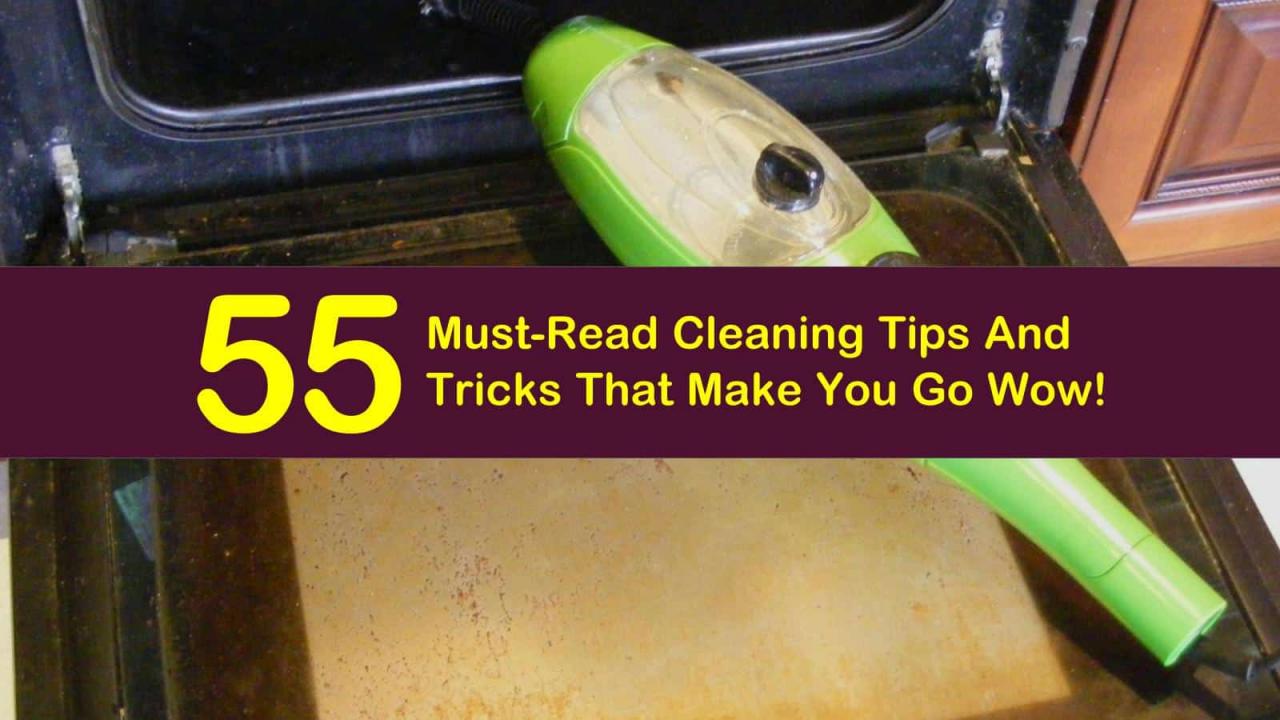
Source: hometipsworld.com
Cleaning wood furniture depends on the finish:
- Polished wood: Dust regularly with a soft cloth. Clean spills immediately. Use a wood polish specifically designed for polished wood.
- Unfinished wood: Dust regularly with a soft cloth. Clean spills immediately with a damp cloth. Avoid using harsh chemicals or abrasive cleaners.
Cleaning Stainless Steel Appliances
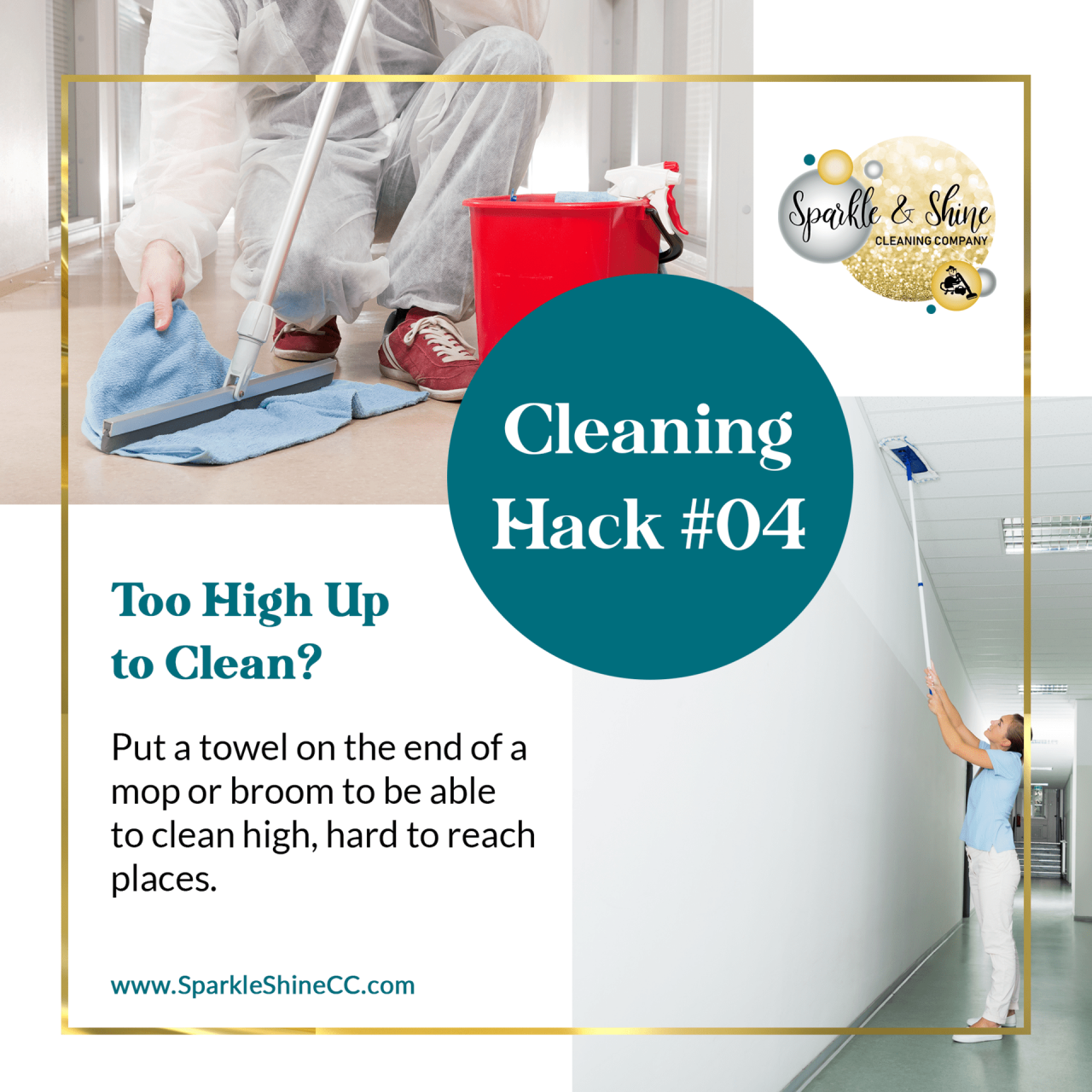
Source: sparkleshinecc.com
Cleaning stainless steel appliances without scratching or leaving water spots:
- Gather supplies: You’ll need a microfiber cloth, warm water, and mild dish soap.
- Clean with warm water and soap: Wash the appliance with warm water and a small amount of mild dish soap. Wipe with a microfiber cloth.
- Dry thoroughly: Dry the appliance thoroughly with a clean, dry microfiber cloth to prevent water spots. Wipe in the direction of the grain.
Cleaning Upholstered Furniture
Cleaning upholstered furniture depends on the fabric type:
- Fabric: Vacuum regularly. Spot clean spills immediately with a suitable upholstery cleaner. For deep cleaning, consider professional cleaning.
- Leather: Dust regularly with a soft cloth. Condition leather furniture periodically with a leather conditioner. Clean spills immediately with a damp cloth.
Cleaning Various Fabrics
Cleaning various fabrics requires different techniques:
| Fabric Type | Cleaning Method |
|---|---|
| Cotton | Machine washable; generally durable. |
| Silk | Hand wash or dry clean; delicate. |
| Wool | Hand wash or dry clean; delicate. |
Eco-Friendly Cleaning Tips & Tricks
Eco-friendly cleaning practices minimize environmental impact while maintaining a clean home. This section provides tips and recipes for sustainable cleaning.
Homemade Natural Cleaning Solutions
Recipes for homemade natural cleaning solutions:
- All-purpose cleaner: Mix equal parts water and white vinegar in a spray bottle. Add a few drops of essential oil for fragrance.
- Glass cleaner: Mix equal parts water and white vinegar in a spray bottle.
- Toilet bowl cleaner: Pour 1 cup of baking soda into the toilet bowl, followed by 1 cup of white vinegar. Let it fizz, then scrub and flush.
Environmental Impact of Cleaning Products
Using harsh chemicals contributes to water and air pollution. Eco-friendly alternatives minimize this impact.
Reducing Water and Energy Consumption
Reducing water and energy consumption during cleaning:
- Use less water: Use a damp cloth instead of soaking items excessively.
- Air dry: Air dry items whenever possible instead of using a dryer.
- Use energy-efficient appliances: Choose energy-efficient washing machines and dishwashers.
Sustainable Cleaning Practices
Sustainable cleaning practices and their benefits:
- Reduce, reuse, recycle: Use reusable cleaning cloths and containers.
- Choose eco-friendly products: Opt for plant-based and biodegradable cleaning products.
- Proper disposal: Dispose of cleaning products properly to avoid environmental harm.
General Inquiries
What’s the best way to clean a burnt-on casserole dish?
Soak the dish in hot, soapy water for several hours, or even overnight. Then, gently scrub with a non-abrasive sponge or cleaning pad. For stubborn residue, try simmering a solution of water and baking soda in the dish.
How often should I clean my dishwasher?
Run a cleaning cycle with a dishwasher cleaner every month to remove food residue and mineral buildup. Additionally, wipe down the interior and exterior weekly to prevent spills and crumbs from accumulating.
How can I prevent mold and mildew in my bathroom?
Ensure good ventilation by using the exhaust fan during and after showers. Regularly clean grout and caulk with a bleach solution (following safety precautions) or a commercial mildew remover. Wipe down surfaces after each use to prevent moisture buildup.
What’s the best way to clean microfiber cloths?
Wash microfiber cloths separately in hot water with a small amount of detergent (avoid fabric softener). Avoid using bleach. Air dry or tumble dry on low heat.
How can I remove pet hair from upholstery?
Use a lint roller, a damp sponge, or a vacuum cleaner with an upholstery attachment. For stubborn pet hair, try using a rubber glove to rub the fabric, which will help lift the hair.
